We’ve all heard the hype — technology is revolutionizing how we learn and teach. New studies indicate that technological advancements have indeed had a significant positive technological impact on education, shaping the future of education. This could impact investment education in ways we have never yet imagined. But is all the hype really justified?
The role of technology in education is significant as it offers a more simplified, more accessible and more practical way of learning, including transforming classroom dynamics. However, we have so many aspects to consider when examining this topic that it’s essential to take a holistic approach.
Math & ELA | PreK To Grade 5
Kids see fun.
You see real learning outcomes.
Watch your kids fall in love with math & reading through our scientifically designed curriculum.
Parents, try for free Teachers, use for free
In this article, we’ll explore the future of technology in education and its impact on child learning from all possible angles. If you’re seeking a comprehensive assessment of the present landscape of educational technology, you should find this blog post helpful!
Related Reading: Best Educational Websites for Kids that Spark Curiosity
3 Game-Changing Educational Tech Innovations

Undoubtedly, technological advancements have been rapidly changing our world, and the domain of education is no exception. In fact, in recent times, children’s education has dramatically benefitted from these advancements. Over the years, educational technology has come a long way and continues to evolve rapidly.
Let’s explore some of the most prominent innovations in this field and technological impacts on education and on students’ learning.
1. Interactive Learning Tools
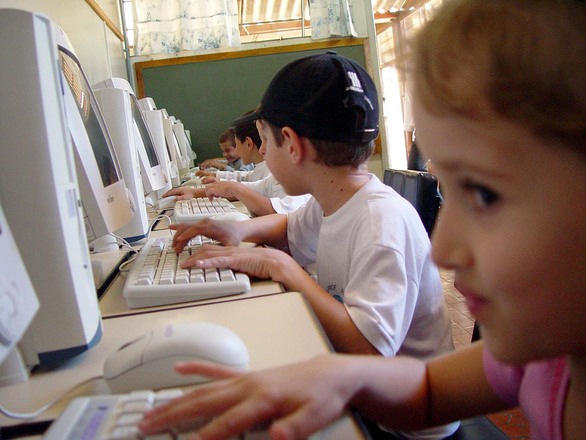
In the current era, technological advances in education have been introduced, interactive learning tools that have become increasingly popular and a common tool of learning in classrooms. That includes tablets, digital whiteboards, smartphones, iPads, laptops, and more. They have allowed children to learn in an engaging and dynamic environment, paving the way for the future of education.
But that’s not all! The use of technology in schools has also afforded learners the much-needed wealth of digital knowledge and allowed them to explore a variety of topics in greater depth!
For instance, with a laptop, tablet, smartphone, or any other internet-enabled gadget, students can easily access videos, tutorials, and interactive lessons to learn in an engaging and immersive manner.
The tools have also provided a convenient way for teachers to issue assignments to learners and keep track of their progress.
2. Virtual Reality and Augmented Reality
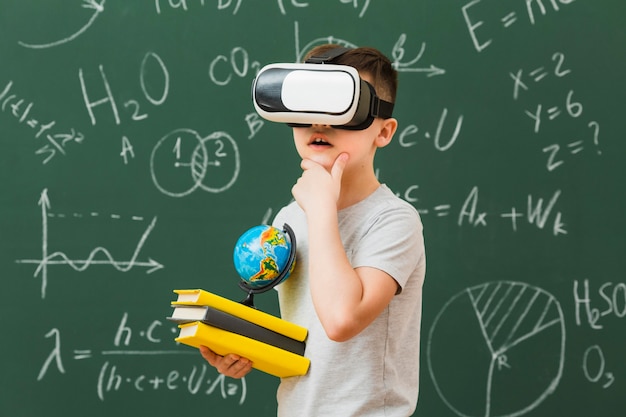
Virtual reality (VR) and augmented reality (AR) have for years been prevalent in video games. However, their application in education is expanding, and that’s due to the immersive learning experiences they offer learners.
With these technological tools, teachers can take students on virtual field trips, teach them about different cultures, or give them a firsthand experience of certain historical events. Imagine exploring planets without ever having to leave the classroom. Isn’t that awesome? It definitely is, and there’s no denying that it can be quite a thrilling experience for students!
3. Artificial Intelligence in Education
Artificial intelligence (AI) isn’t used only in tech companies to develop consumer products. It is a transformative force that is reshaping the landscape of education and defining the future of education itself. AI-enabled tools let teachers create personalized learning experiences for their students and tailor the educational process to meet each student’s individual needs.
For instance, AI-based tutoring systems can provide students with real-time feedback and guide them through the learning process.
Teachers can also harness the power of AI-based analytics to get data on student performance, which they can use to identify areas of improvement and customize classroom activities accordingly. Overall, AI-based tools are making it easier for educators to create personalized learning experiences for their students while offering insights into student progress in real-time.
Related Reading: Top Online Teaching Tools
Building Bright Futures: 3 Ways Technology Benefits Child Learning

The introduction of technology into education has brought about a number of remarkable benefits for children. The impact of technology on education has been significant, and the impact will only increase with time. Let’s take a deep dive into some of the most prominent ones!
1. Personalized Learning Experiences
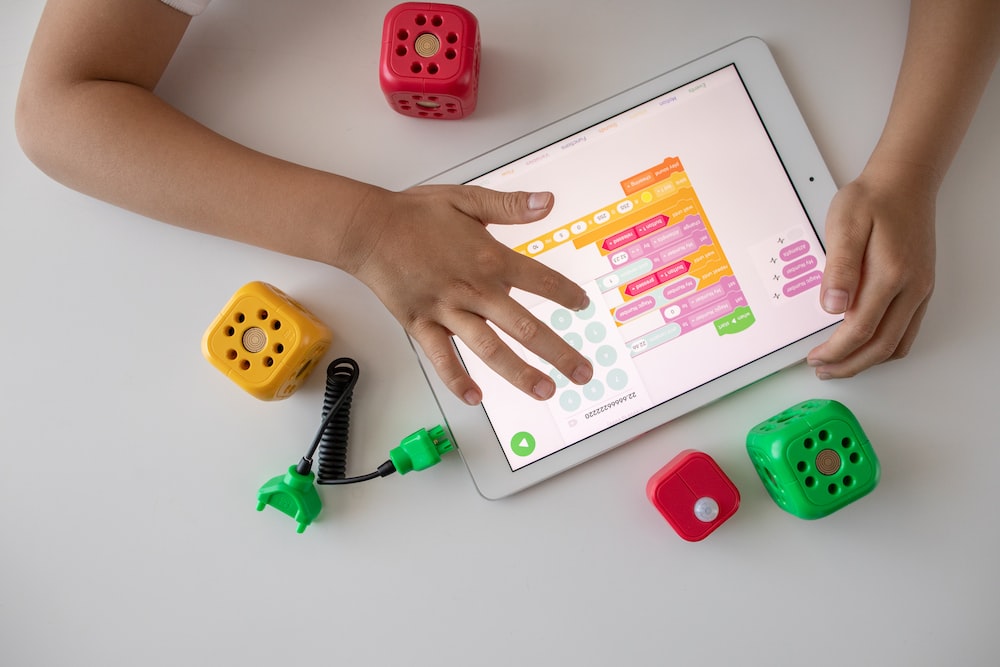
What beats personalized learning experiences for children? Personalization isn’t just essential in business-customer interactions. It’s also necessary when it comes to delivering educational content.
Through technology, educators can tailor classes to meet the student’s individual needs and preferences, guaranteeing students the best learning experience that truly maximizes their potential.
In addition to that, technology-based learning solutions let children customize their lessons according to their own pace and style.
That means learners can now stay on track at their own pace without matching the speed of their peers as required by the traditional education system. They can take their time and learn at their own rhythm without feeling left behind.
2. Increased Engagement and Motivation
The introduction of interactive learning tools into the classroom has drastically improved student engagement and motivation.
Imagine exploring different subjects in an immersive and interactive way! That’s exactly what students can now experience with virtual reality headsets. This innovative technology not only helps children maintain focus and engagement but also turns the learning process into an enjoyable adventure.
Similarly, AI-based educational robots make learning more fun by interacting with children through various activities. From playing games to solving real-world problems, these robots can provide a fun and engaging way to learn.
Of course, more engaging and interactive learning means that kids are more likely to retain the information and knowledge they gain, which is a massive plus for any education system.
3. Access to Global Knowledge and Resources
The internet has opened up a world of opportunities for learners everywhere. With just a few clicks, students can now access a wealth of knowledge and resources from around the globe.
From online lectures by renowned experts to educational videos on virtually any topic, digital learning tools make it easier for learners to explore different aspects of their chosen subject.
Plus, students no longer have to stick to the perspective of that one teacher in their classroom. That’s because, with technology, learners can now get information from different sources. That gives them a broader and more holistic view of whatever they’re studying.
Overall, technological advancements in the education sector have afforded students with many more resources and opportunities to learn. Of course, that has gone a long way to simplify learning.
Related Reading: Best Virtual Games for Classroom Fun & Learning
Addressing the Complexity: 3 Challenges in Advancing Education Technology
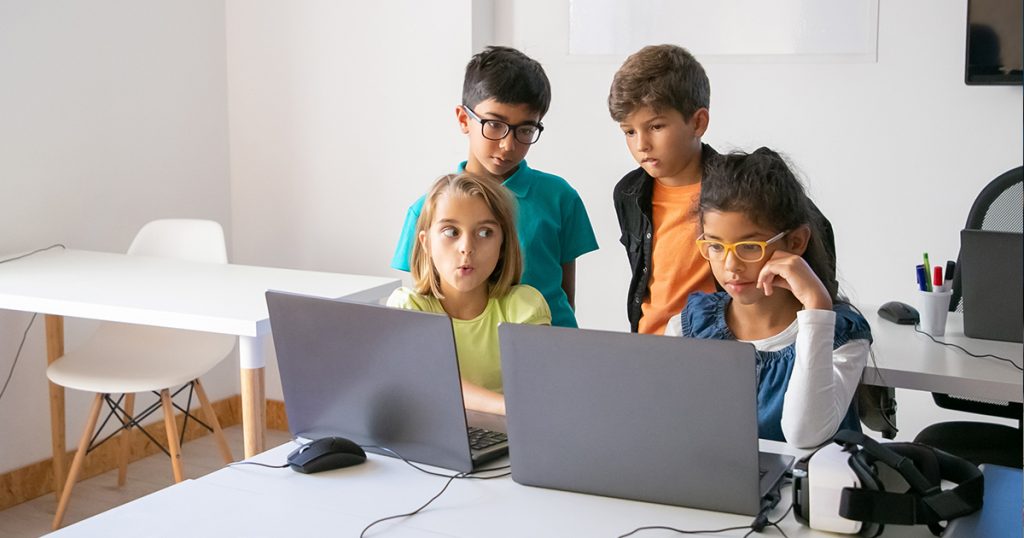
As seen in the previous section, introducing technology into education has undoubtedly brought many benefits to the learning process. However, it’s also essential to consider some of the potential challenges that come with it.
1. Privacy and Data Security
If there’s one major threat attached to the use of technology generally, it has to be privacy and data security. Cybercriminals frequently exploit vulnerable security systems to obtain sensitive information.
And while the educational sector may not be their top priority, it’s still crucial to prioritize protecting learners’ data and information alongside leveraging technology to enhance their learning experience using modern security technologies.
Ensure that you securely store login details, passwords, and other sensitive data from malicious actors’ access. Also, put all the necessary measures in place to minimize the chances of getting hacked.
For instance, teachers and learners should regularly update the security systems and software they use so that any loopholes can be patched up in time.
By taking the necessary precautions, schools can ensure that children enjoy all the benefits of technology without risking their safety and privacy.
2. Equity & Accessibility
Another potential challenge associated with technology in education is the issue of equity and accessibility.
Sure, technology has allowed educators to reach more students and even improved the learning experience for millions of learners.
But we must also acknowledge the vast digital divide between students from different socio-economic backgrounds. As such, not all students enjoy equal privileges technology-wise.
That means educators and policymakers need to closely work together to bridge this gap and ensure that all learners get equal learning opportunities.
There are two ways they can do that. Firstly, they should provide devices and internet access to students who would otherwise not have the means to get them is one way to narrow the huge digital gap.
In addition, educators should invent strategies to ensure that all learners have access to their lessons and learning materials despite their socio-economic backgrounds. That way, everyone can make the most of the benefits technology offers.
3. Teacher Training and Integration
Lastly, despite the multitude of perks technology has brought to education, proper training of educators is paramount for its effective use. Inadequate training can make educators fall behind in their knowledge and skills, especially considering how rapidly technology evolves.
Successfully leveraging technology in the classroom requires that teachers possess a thorough understanding of its capabilities. They must know how it works and the benefits and drawbacks of different innovations to tailor their approach to best serve their students.
Hence, investing in teacher training is crucial to ensure technology is correctly implemented and positively impacting the classroom.
Again, much like with the students, we must also acknowledge a wide digital gap between teachers regarding understanding technology. That’s why educational institutions need to equip their educators with skills in the latest technological advancements.
With the right skills, teachers can offer personalized learning experiences to students, facilitate collaborative work, and support digital literacy. Plus, training will significantly boost the overall quality of education in the long run.
Related Reading: What Is Student Centered Learning? Importance & Benefits
Transforming Education: A Tech-Driven Future

Technology keeps on changing, and it is vital to examine its impact on education while considering the future of education. What promising developments can we anticipate?
Here are 3 key areas to watch out for:
- Blended learning environments
- Adaptive learning systems
- Collaborative online platforms
But what does each of these mean, and how will it shape the future of technology in the classroom and in overall education? Well, let’s take a deeper look into each.
1. Blended Learning Environment
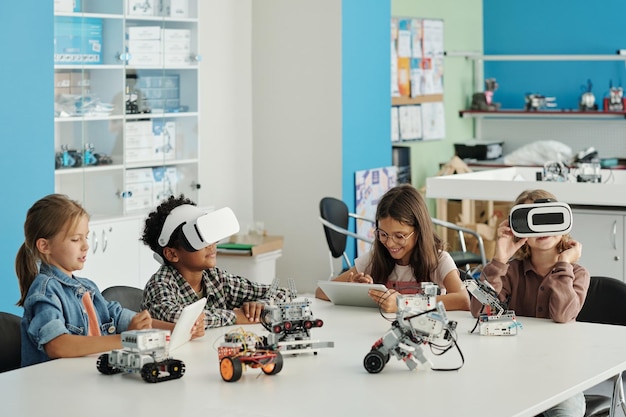
Blended learning environments combine various traditional and digital elements into one cohesive educational experience. This environment allows students to enjoy the best of both worlds in learning. In other words, they can benefit from traditional classroom teaching and online courses and activities.
As much as the traditional educational system has several gaps perfectly addressed by technology, it is essential to note that the old system beats the latter in some areas. For instance, it’s much better when it comes to social interactions and interpersonal skills.
That’s because, unlike the recent advancements in technology, the traditional classroom setting encourages more collaboration among students and helps to foster better communication.
Therefore, as much as we’re embracing technology and all its perks, we don’t have to completely discard everything about traditional methods either. Instead, we should borrow the good from both worlds to maximize the learning experience for our students.
One perfect way to do that is by incorporating technology into the physical classroom. It will create a more engaging and dynamic learning experience and can be done using anything from interactive digital whiteboards to virtual reality simulations.
Of course, to make the most of this new wave of tech-enabled learning, hiring tech-competent teachers must be the priority for all schools. This includes personnel who deeply understand educational technology and how best to deploy it in the classroom.
Ultimately, blended learning environments offer an incredible opportunity for learners to become more engaged and motivated in their studies.
Using the latest advancements in educational technology allows teachers to create an immersive educational space that is both fun and productive. That way, students will be prepared to face and flourish in the modern world.
Moreover, educators and administrators should harness educational technology to create an exciting learning environment for learners. It will truly unlock the potential of technology in education.
2. Adaptive Learning Systems
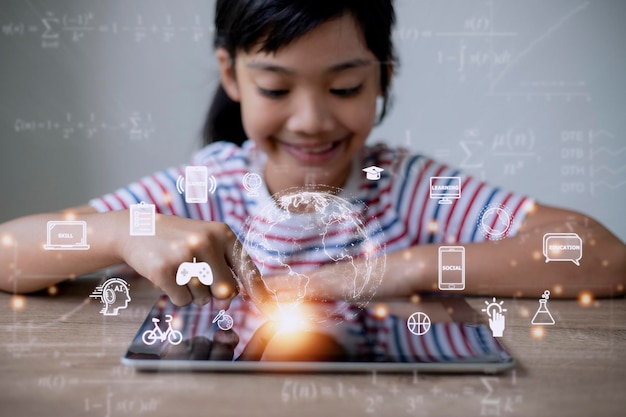
Adaptive learning systems offer a revolutionary way of teaching that caters to individual differences. By analyzing a student’s strengths and weaknesses, these systems adjust curriculums to fit their unique learning style, interests, and capabilities.
In other words, adaptive learning systems let teachers design individualized education plans that best suit each learner’s unique needs and interests. Hence, each student gets exactly what suits their needs and abilities best and is more involved in the learning process, leading to greater success and involvement in the long run.
Plus, this innovation can also reduce the amount of time spent on preparing lesson plans and grading assignments. That means teachers can use the extra time to focus on more important tasks, like providing one-on-one instruction and support to their students.
3. Collaborative Online Platforms
Collaborative online platforms are a great way to facilitate learning in the classroom. This type of technology allows students to collaborate and work together on projects, share ideas, and get feedback from their peers.
It’s also a great way to connect students with each other and with their teachers. By having access to these communication tools, students can stay connected and engaged in the learning process from anywhere in the world.
Moreover, these platforms are also great for creating a more interactive classroom environment.
Picture this: a classroom where students collaborate in real-time, get prompt feedback from their peers and teachers, and learn together in a more engaging way! Doesn’t that sound incredible?
Well, these environments are slowly gaining popularity, and that’s because they make learning not only more enjoyable but also more interactive and meaningful to teachers and learners alike.
Overall, collaborative online platforms have the potential to transform the way students learn in the classroom. They offer new opportunities for teachers and students alike, enabling them to create a more engaged and interactive learning experience.
Related Reading: Best Teaching Tools That Elevate Classroom Learning
Conclusion
Technological advancements in education have offered teachers and learners exciting opportunities, propelling the future of education forward. The advancements have revolutionized how we learn and make the whole process more interactive and engaging.
But again, that doesn’t necessarily mean everything about them is perfect. There are still several challenges that should be addressed when leveraging technology in education.
With proper measures, however, technology can significantly enhance the learning experience. Teachers and students can tap into its immense potential for better educational outcomes.
Frequently Asked Questions (FAQs)
What is one positive effect technology has had on education?
One positive effect of technology on education is the ability to enhance and expand access to educational resources and opportunities.
What is the future of technology in education?
The future of technology in education is characterized by personalized and immersive learning experiences, leveraging advancements such as artificial intelligence, virtual reality, and adaptive learning systems.
How does technology impact student learning?
Technology positively impacts student learning by enhancing engagement, providing access to a vast array of educational resources, promoting personalized learning experiences, fostering collaboration, and enabling real-time feedback and assessment, ultimately leading to improved academic outcomes.
























